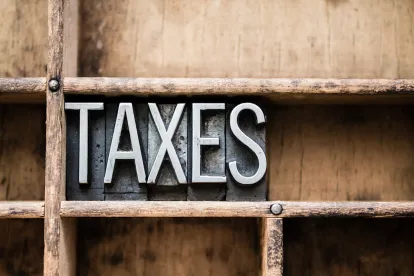On May 2, 2023, the Department of the Treasury and Internal Revenue Service (“IRS”) issued proposed Treasury Regulations (REG-124064-19) that would, in certain cases, terminate the application of Section 367(d)[1] when intangible property is repatriated back to the United States. The proposed Regulations represent a taxpayer-favorable position for taxpayers that have considered repatriating intangible property to the United States but are concerned about the possibility of excessive taxation under current tax law.
Section 367(d) and the Regulations promulgated thereunder are intended to prevent domestic corporations from shifting income-generating intangibles offshore in tax-free transactions, thereby reducing the amount of income subject to U.S. taxation. The outbound transfer of certain intangible assets (such as patents, inventions, trademarks, licenses, customer lists, and similar intangibles) by a U.S. person to a foreign corporation in connection with a Section 351 contribution or a tax-free reorganization is subject to a special rule under Section 367(d). When applicable, Section 367(d) recharacterizes a transfer of intangibles as a taxable contingent sale of the property, the imputed payments from which are taxable by the United States to the domestic transferor over the useful life of the transferred property (or, in the case of a direct or indirect disposition of the intangible property following the transfer, at the time of such disposition). The amounts taken into account by the domestic transferor must be commensurate with the income attributable to the transferred intangible property.
The current Section 367 Regulations do not distinguish between subsequent transfers of intangible property made to related U.S. or foreign persons. In the preamble to the proposed Regulations, the IRS expressed a concern that, in certain cases, the current Section 367(d) Regulations “can inappropriately require the U.S. transferor to continue recognizing an annual section 367(d) inclusion even if the subsequent transfer is to a related U.S. person that will recognize the income derived from the intangible property.” The application of Section 367(d) in these situations “could give rise to excessive U.S. taxation and disincentivize taxpayers from repatriating that property.” Thus, the proposed Regulations would terminate the continued application of Section 367(d) in certain cases if intangible property is repatriated to certain U.S. persons that are subject to U.S. taxation with respect to the income derived from the intangible property.
The proposed Regulations achieve the desired objective by terminating the application of Section 367(d) if the transferee foreign corporation repatriates the intangible property to a “qualified domestic person” and certain reporting requirements[2] are satisfied. A qualified domestic person for these purposes is (i) the original domestic transferor, (ii) a successor domestic transferor that is either an individual or a corporation subject to U.S. federal income tax, or (iii) a U.S. person that is either an individual or a corporation subject to U.S. federal income tax and that is related to a person described in (i) or (ii).[3] When these requirements are met, the proposed Regulations require the U.S. transferor to include in gross income a partial annual inclusion attributable to the part of its taxable year that the transferee foreign corporation held the intangible property, after which the intangible property is no longer subject to Section 367(d).
The proposed Regulations also contain a gain recognition rule whereby the domestic transferor might be required to recognize gain irrespective of whether the above termination rule applies. The gain recognition rule hinges on the manner of the repatriation. If the intangibles are considered “transferred basis property” (within the meaning of Code Section 7701(a)(43)) by reason of a repatriation to a qualified domestic person, the amount of gain the U.S. transferor will recognize pursuant to the gain recognition rule is the amount of gain the transferee foreign corporation would recognize, if any, upon the repatriation if its adjusted basis in the intangible property were equal to the U.S. transferor’s former adjusted basis in the property. In addition, the U.S. transferor would include in its income its deemed Section 367(d) income up to the repatriation date and the repatriated intangible would cease to be subject to Section 367(d) after the transaction. Should the repatriated intangible property not constitute “transferred basis property,” the amount of gain, if any, required to be recognized would equal the excess, if any, of the fair market value of the intangible property at the time of its repatriation over the original domestic transferor’s original basis in the intangible property.
The proposed Regulations are not reliance regulations and therefore are only applicable if and when finalized. If finalized, the proposed Regulations would apply to subsequent dispositions of intangibles that occur after the date the final Regulations are published in the Federal Register. Comments on the proposed Regulations are due by July 3, 2023.
[1] Unless otherwise indicated, all Section references are to the Internal Revenue Code of 1986, as amended.
[2]The termination rule would not apply to an otherwise qualifying intangible property repatriation, and annual inclusions would continue to be required, unless the original domestic transferor reported certain information about the repatriation. This information would include the original domestic transferor’s original basis in the outbound intangible property, a copy of Form 926 that the original domestic transferor filed for the original outbound transfer, and the qualified domestic person’s name, address, and taxpayer identification number. Relief for a failure to report the information would be available, however, if the original domestic transferor promptly provided the information upon becoming aware of the failure.
[3] Related persons for purposes of the proposed Regulations are certain U.S. individuals and domestic corporations. In the case of a domestic partnership, the proposed Regulations define a related person by reference to certain relationship described in Sections 267 and 707(b)(1).






 />i
/>i

